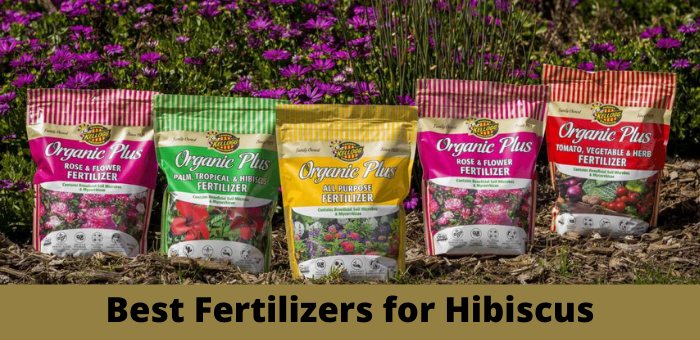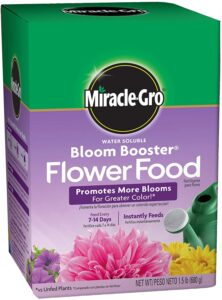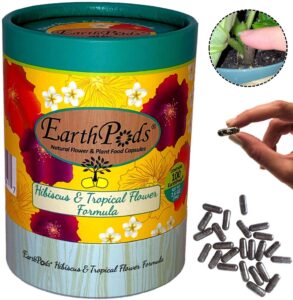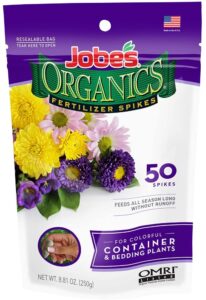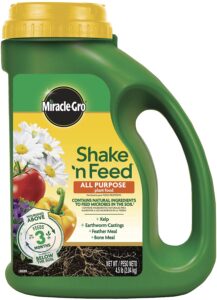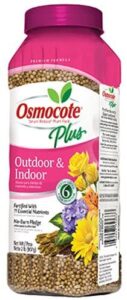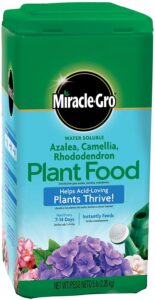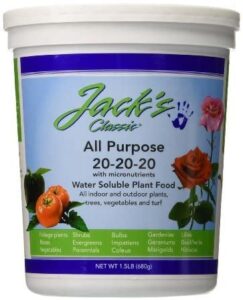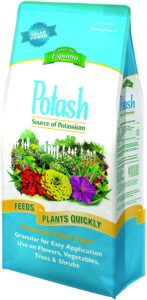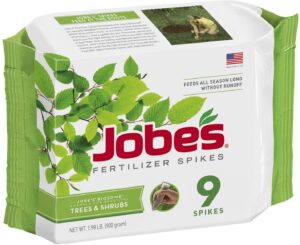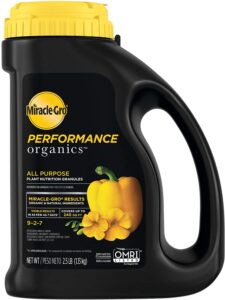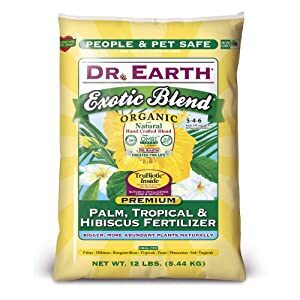
It’s common for these flowering plants to have issues with regular soil. That is why you need to research and use the best fertilizer for hibiscus plants. This can be hard to do yourself, so we have created a helpful guide.
If you love the gorgeous and exotic hibiscus, these plants are healthy growers that produce numerous vivid colours flowers and big flowers. This flowering plant is an excellent household plant if you have the desire to add a lovely leafy plant that flowers easily!
You should know how to provide the essential requirement of their colour pigmentation, its durability to support dense buds, and its growth. One critical problem which occurs is caused by lack of nutrition in the soil.
This common issue can be fixed if you know which the best fertilizer for hibiscus plants is.
When choosing fertilizer for your hibiscus, focus on ingredients rather than brands. Understanding fertilizer basics for hibiscus can help you choose the right fertilizer to keep your healthy hibiscus covered in blooms.
Here, you will learn what fertilizer works well and why. You’ll also find out when and how to fertilize your hibiscus plants.
What to look for when choosing a fertilizer for your plant?
When you shop for hibiscus fertilizer, you’ll see three numbers on product labels, known as the N-P-K ratio. These numbers signify the percentages of the three most important plant nutrients in that fertilizer formula.
The first number is every time nitrogen (N), known for promoting foliage growth. The second number shows phosphorus (P), usually touted for developing roots and promoting prolific blooms. The third number is potassium (K), which indirectly promotes root development and assists overall health and growth. Hibiscus chooses a ratio of medium-low-high.
Nitrogen
Hibiscus suffer from nitrogen too high or too low. At low levels, plant lacks sufficient nutritional support. At high levels, nitrogen stimulates foliage at the expense of blooms. Too much nitrogen causes buds to drop and might burn roots and foliage.
Still, nitrogen is very essential. It moves easily through soil, so it leaches away with water and should be replaced. This is especially true if your hibiscus grows in a container. Hibiscus fertilizer needs a moderate nitrogen level in proportion to the other two numbers.
Phosphorus
Many bloom-intensifying fertilizers contain high phosphorus. This isn’t well for hibiscus. Phosphorus doesn’t move willingly; it builds up over time. Too much soil phosphorus bind up other essential nutrients that hibiscus need to thrive.
The nutrients can’t be absorbed even when they are present. Instead of enhancing hibiscus flowers, high phosphorus inhibits them. Alkaline soil compounds the problem. Once phosphorus builds up, soil can take up-to a full year to recover. Always keep the middle number on your hibiscus fertilizer low.
Potassium
Potassium is the most important nutrient for hibiscus blooms and overall health. It balances, regulates and supports all aspects of plant growth. Hibiscus flowers, with their vibrant colours and size, demand more potassium than other blooming flowers do.
High potassium helps foliage and flowers stay hydrated, and provide the nutritional support those magnificent flowers need. The last number on your fertilizer label, phosphorus should be the highest of the three.
10 Best fertilizer for Hibiscus reviews
Miracle-Gro Water Soluble Bloom Booster Flower Food Key Features
- Promotes more blooms for greater color versus unfed plants
- Feed every 1-2 weeks
- Safe for all plants, guaranteed not to burn when used as directed and is one of the best fertilizer for hibiscus
- Formulated for beautiful blooms
- Use with the Miracle-Gro Garden Feeder or any watering can
2. EarthPods Premium Hibiscus & Tropical Flower Plant Food – Easy Organic Fertilizer Spikes
EarthPods Premium Hibiscus & Tropical Flower Plant Food Key Features
- Boosts flower production, root growth & blossom color vibrancy for Hibiscus, Bougainvillea, Plumeria (Frangipani / Lei plant), Anthurium, Lantana, Crocosmia, Heliconia, Bird of Paradise, Blood Lily, Passion Flower, Plumbago, Jasmine (Ixora), & other tropical plants.
- 1 tube = 100 concentrated EarthPods (a 4-year supply for a single special tropical Hibiscus or use on big collection of potted tropical flowers)
- Push 1 EarthPod all the way into potting soil mix near center of tropical plant, then just water! (EarthPods break down & slow release nutrients direct to root zone)
- Special tropical flower fertilizer robust with a variety of organic plant nutrients, trace minerals, natural soil humates & a diverse population of plant root populations in a form immediately available to your plants and is one of the best fertilizer for hibiscus
- Stores easily on your kitchen shelf + recycle the empty paperboard tube when done (EarthPods are pet, child, eco-friendly + 100% sustainably made in the USA)
Jobe's Organics Container & Bedding Plant Fertilizer Spikes Key Features
- Organic fertilizer spikes; time release fertilizer; pre-measured to provide plants with nourishment at their roots and is one of the best fertilizer for hibiscus
- OMRI listed for organic gardening; certified organic means no synthetic chemicals
- Contains Jobe’s Biozome, with the proprietary microorganism Archaea that aggressively breaks down nutrients for faster results
- Jobe’s Biozome improves soil conditions, helps resist disease, insects, and drought during the growing season
- No mess easy to use spikes; prevents waste and run-off; analysis: (3-5-6), 50 spikes in resealable bag
Miracle-Gro Shake 'N Feed All Purpose Plant Food Key Features
- Full of essential nutrients that help feed and nourish above and below the soil
- Contains vital micronutrients to grow stronger, vibrant and more productive plants versus unfed plants
- For use in ground and in containers; Feeds up to 3 months
- Guaranteed not to burn when used as directed and is one of the best fertilizer for hibiscus
- Contains natural ingredients that help feed and nourish above and below the soil
Osmocote 274250 Smart-Release Plant Food Plus Outdoor & Indoor Key Feature
- Our best formula, fortified with 11 essential nutrients
- Works with virtually all plant varieties, in all growing conditions
- Feeds up to 6 full months
- Apply with confidence to potted plants, indoors or outdoors and is one of the best fertilizer for hibiscus
- No-burn pledge when used as directed
Miracle-Gro Water Soluble Azalea, Camellia, Rhododendron Plant Food Key Features
- Instantly feeds acid-loving plants for lush foliage and beautiful blooms
- Feed every 1-2 weeks
- Helps acid-loving plants such as azalea, camellia, gardenia, hibiscus, holly, hydrangea, orchid, rhododendron and many others thrive
- Use with Miracle-Gro Garden Feeder or any watering can and is one of the best fertilizer for hibiscus
- Feeds the roots promoting quick and beautiful results
Jack's Classic All Purpose 20-20-20 Water Soluble Plant Food Key Features
- Fertilizer works well on all plant materials as a general-purpose fertilizer
- Powerful blend of nitrogen, phosphorus and potassium in a 1: 1: 1 ratio
- Feeds through the roots and leaves
- Especially effective on indoor foliage plants to keep leaves green and healthy
- Features the highest safety factor to prevent burning when applied as directed and is one of the best fertilizer for hibiscus
8. Espoma PO6 Potash Bag – 6 Pound
Espoma PO6 Potash Bag Key Features
- This potash bag is an enriched source of potassium
- Promotes plant vigor and disease-resistance and is one of the best fertilizer for hibiscus
- For all flowering plants, shrubs, trees and vegetables
- Analysis 0-0-60
- Comes in 6-pound bag
9. Jobe’s 01310 1310 Fertilizer – 9 Spikes
Jobe's 01310 1310 Fertilizer Key Features
- Pre-measured fertilizer spikes nourishes at the roots; Time release fertilizer for all trees and shrubs
- Easy to use fertilizer spikes; No wasteful runoff, no mess, hazards or smells; Apply early spring and late fall
- Continuous supply of nutrients below the surface, where the active roots are growing
- Jobe’s tree spikes are easy to insert around each tree’s dripline, and the slow-release formula feeds all season and is one of the best fertilizer for hibiscus
- Guaranteed analysis: (16-4-4) 5 spikes, (15-3-3) 9 spikes, (16-14-4) 15 spikes,160 spikes
Miracle-Gro Performance Organics All Purpose Plant Nutrition Granules Key Features
- Use Miracle-Gro Performance Organics All Purpose Plant Nutrition Granules to feed your plants, flowers, vegetables, and herbs
- The shaker jug makes feeding in-ground and container plants easy and is one of the best fertilizer for hibiscus
- In as little as 7 days you'll start to see results (vs unfed plants)
- Enjoy Miracle-Gro results with organic, all natural ingredients
- Reapply every 4-6 weeks and water regularly for best results
How to fertilize Hibiscus Plants?
When you begin fertilizing Hibiscus plants, make sure the fertilizer gets as far as the edges of the whole tree canopy. Do not just do it at the base of the Hibiscus’s trunk.
By doing this, the feeding does not get as far as the roots. A little or no fertilizer to the roots will cause the Hibiscus plant will not grow and will not thrive. For more blooms and attractively green, the fertilizer must reach the roots.
Not all fertilizer products will satisfy the expectation. If the fertilizer is water-soluble, read the instruction label and mix it properly. This way, you will not under fertilize or over-fertilize the Hibiscus plants.
You can use the measuring cup if provided by the product.
Hibiscus plants prefer light feedings and do it frequently. During its growing stage, with USDA zones 4 through 11, they would be happy with steady fertilizer.
You need to cut back the fertilizer during the winter months. However, during the hot summer months, the Hibiscus plants require more fertilizer.
Apply 1/2 teaspoon per one gallon of water of 17-5-24 NPK formulation fertilizer with daily watering. If you practice the fertilizing every week, apply one teaspoon per one gallon of water.
Hibiscus plants love to have the soil moist and do not fertilize the plant when the soil is dry. Follow the instruction label, and look for NPK formulation that meets the requirement for Hibiscus plants.
When to fertilize Hibiscus Plants?
The best time to fertilize Hibiscus plants is early in the morning, according to many growers. Hibiscus plant is very happy when being fertilized at a cool temperature.
To make the soil cool, water the soil completely, especially if you use dry fertilizer. When you finish fertilizing, repeat the watering. The cool temperature will help the plant avoid damaging the root or burn the leaves.
Even though Hibiscus plants love being in an area with eight hours of sunlight every day, warm temperatures can cause the water and even the fertilizer to evaporate. So keep the pant cool when you are fertilizing.
You have to place the plant in the shaded area in the morning to get the cool temperature and relocate the plant in the open area with full sun exposure. With this condition met, you can expect to get more flowers.
How often should you fertilize Hibiscus Plants?
Do the fertilizing frequently but do not over-fertilize. Add the fertilizer when you are watering the Hibiscus plants. If you fertilize lightly, your plant will grow well and not be over-fertilized.
You can use a slow-release fertilizer with the right NPK formulation four times a year. Do it in early spring, when you see the first blooming, in the middle of summer months, and early winter months.
For the water-soluble fertilizers, you have to read the instruction label carefully on how to dilute the product. You can apply every two weeks when the Hibiscus plants in the blooming season. The best time to fertilize is one time a month.
For dry fertilizer, fertilize the plants each week or one time in two weeks.
Conclusion
It is important to understand what your plants need to thrive. That will ensure that they look their best and produce vibrant blooms that will impress everyone. We’ve reviewed eight different products to help you decide which one is ideal for your needs.
Though there were many options available, the best hibiscus fertilizer is likely to be Miracle Pro water soluble bloom booster flower food. We looked at a variety of things when choosing the right fertilizer for hibiscus plants.
Of course, our primary concern was the ratio of nitrogen, potassium, and phosphate. This product had the highest amount of potassium while being low in phosphorus. It also had an average percentage of nitrogen.

